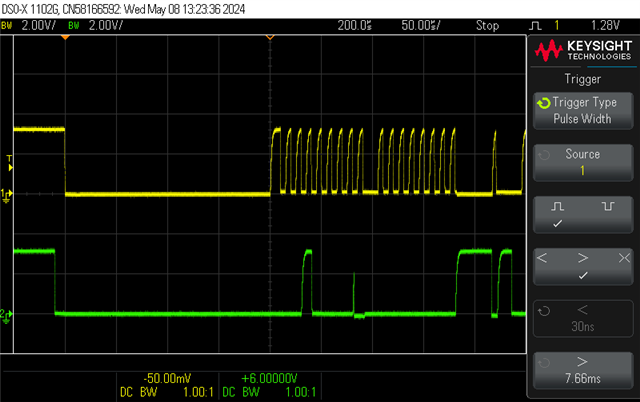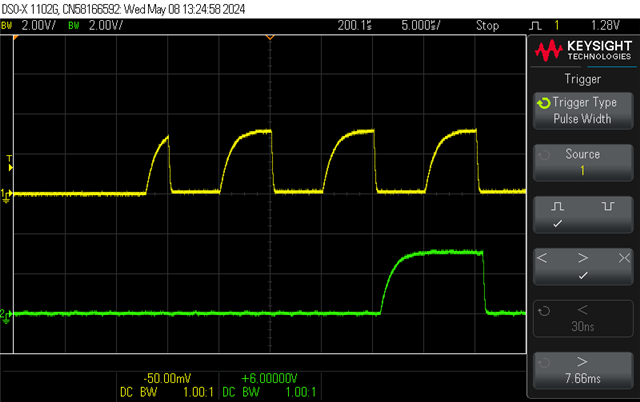Hi All,
My issue is may connected to
TWI HW producing shortened ACK clock pulse
I'm using:
- nRF52 DK dev. board
- nrf52dk_nrf52832_defconfig
I get communication errors very several times. (More than 50%)
When the error occurs the first SCL impulse is half of the required. It's clear that at the beggining the slave is stretching the clock, but after releasing the master drives again too quickly.
The slave will nack the device address(0x08 in 7bit mode)
In 25% rate the communication is proper even to 256 bytes, but finally I got CRC error. For me this suggests that SDA is not sampled in the proper moment.
So my questions are:
- Does i2c driver api using a physical peripheral or emulates the lines by software?
- What kind of i2c errors can be detected by the api/driver? F.e. bus collision, timeout?
- What I do wrong, what I could do better?
Incidentally I use Texas Instrumet slave chip too (BQ76942) but I don't think it could be a problem.
It works properly with 3 other types of i2c master hardware:
- The original TI interface
- With an USB to I2C adapter controlled by .NET code
- With a Microchip PIC 8bit MCU
Thanks in advance,
Attila





